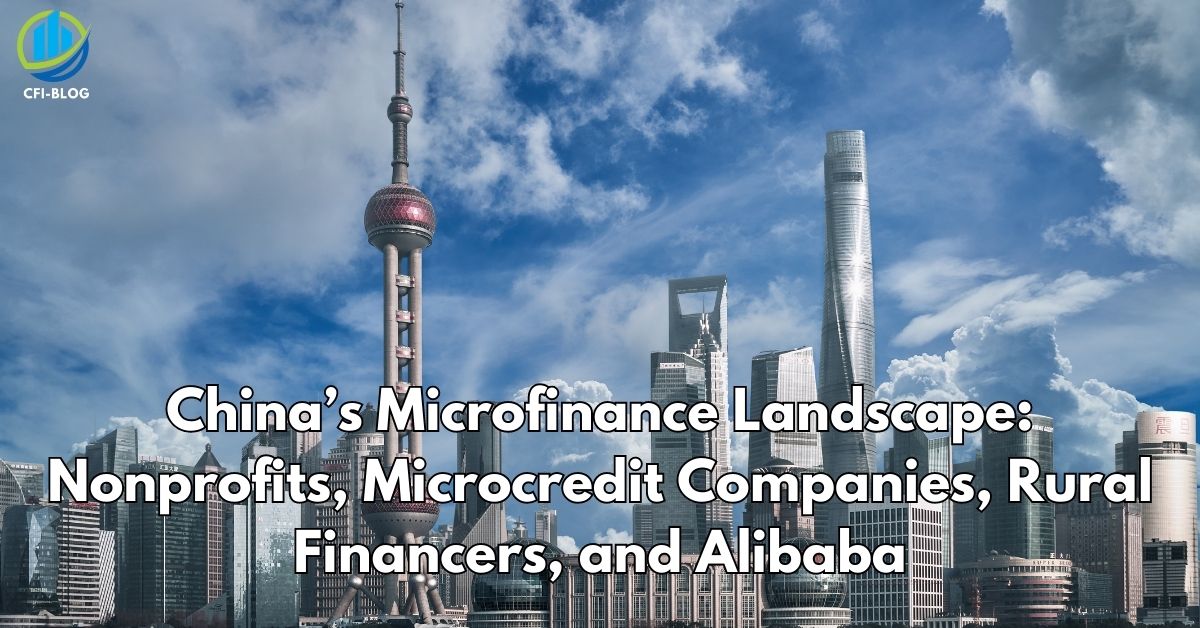China has started to shift the paradigm within the microfinance fraternity. Hong Kong Shanghai Banking Corporation (HSBC) opened its new branch in rural China in a village called Hubei on the 13th of December. The microfinance industry has expanded so much that it has stirred up conversations among prominent names in the private equity industry. International equity firms plan to invest in the newly booming economy and growing urban population.
But, how did that happen? Well, during the 1960s, the country was under a communist regime. The administration had imposed harsh rules for increasing industrial production, which led to some detrimental unintended consequences. To make matters worse, China, during the same underwent a famine that killed a substantial portion of the population. But during the 1970s, things began to change.
In order to handle the financial situation, the communist government liberalized the economy and changed industrial policy. Subsequent years brought massive growth and made China the manufacturing superpower it is today. Now China is nicknamed the factory of the world with a robust economy and a highly educated and urbanized population.
Consequently, the lending market has grown, and the microfinance industry has expanded with the growth of the economy. This led to the onset of an industry offering short-term loans for start-ups, enabling them to jump-start their business. The policymaker also uses microfinance as a tool to fight corruption. With the world’s second-largest gross domestic product, significant business opportunities exist to thrive more than ever.
Contested and Paradoxical Rural Development in China

China may have rapid industrial wealth and ushered in an unprecedented amount of wealth in the country with the help of its massive manufacturing sector, which is the heart and science of client assessment. But that growth is not without its problem. The most prominent problem is the glaring inequality of wealth in the country.
In the event of that, the difference between the have’s and have-nots has been growing for a long time. For instance, the rural population has not benefited much from its economic growth, though, in its defense, most of the population lives in big cities. This problem mainly originates from the absence of social security and enough care for older adults.
Recent studies have revealed much of the increasing divide of the marginalization of the country’s poor and the majority of the rural areas, especially after the era of privatization of the 1990s. During this time, poverty was pervasive enough to be almost permanently entrenched in certain parts of China’s rural population. This happened due to the failed design of financial services for China’s marginalized section of society.
Simultaneously, China has efficiently integrated into the global capitalist trade and implemented market-oriented policies, which have sacrificed and compromised the rural areas for the urban ones, with the whole rural economic ecosystem in shambles. With the urban areas better connected to the world, the rural areas were abandoned for the urban ones. This has exacerbated the wealth division between China’s urban and rural as exhibited in the Gini Coefficient, which is around 0.5, suggesting extreme inequality.
As a result, it made the rural development trajectory rather undisciplined rather than coherent. China’s development story is paradoxical, considering how extreme wealth generation is intertwined with extreme wealth inequality. This is where the microfinance industry comes in. The implementation of microcredit services has exposed China’s failure to uplift the rural population, which is a lesson impact investors learn from microfinance. China’s rural community symbolizes its progress and holds the country back.
The Rise of the Global Microfinance Movement and the Adoption of Microcredit in Rural China

The biggest paradox of the Chinese rural economy is that the fundamental reason hampered its growth is the key to enabling its prosperity–the microfinance industry. The microfinance industry was on the rise in the 1970s when the ever-tempting era of entrepreneurship had people tempted the mass population into a frenzy of opening a start-up cost-effectively. When the internet revolution hit, there was a market gap in easily accessible funds to run the business.
In time, microfinance has become one of the most significant financing industries in the entire world and an alternative to traditional banking loans. This conceptualization of easily accessible funds was present in the Chinese economic consciousness. The economist thought the continuous marginalization of the common masses was the exclusion from the global capitalist system.
This is why economists whole-heartedly support the microfinance industry, which provides affordable loans to the financially excluded part of the population in case of social investment in microcredit review. The main objective of the microfinance industry was to enable stable economic participation and ensure a cohesive transition and upliftment from poverty. While giving microcredit to people experiencing poverty is as old as time, the modern version was started by a Bangladeshi named Mohammed Yanus, who established the Grameen Bank in Bangladesh.
Mr. Yanus returned to Bangladesh after his Ph.D. in the United States. He thought financial inclusion was a human right; therefore, everybody should have access to affordable credit to start their business or for any emergency. The bank first targeted poor women with low collateral loans and reduced risk by making them opt for joint loans and asking for regular payments.
Because of the application of this methodology, the system created a sustainable infrastructure that made the economy work for everybody. This system exploded during the 1980s worldwide and caught the attention of the World Bank and International Monetary Fund to reduce the effects of extreme austerity measures. With the onset of the Internet and banking shifting online, the impact of digital field applications can also be felt as the entire process is digitally rendered, which reflects in the public acceptance of Alibaba.
Frequently Asked Questions (FAQs)
Q1. Which financing institutions are supportive of doing business in China?
The international monetary funds and the World Bank support doing business in China after the country’s unprecedented economic growth. Apart from that, UNDP (United Nations Development Program) and the Bank of China is interested in working with the Chinese Government.
Q2. What is China’s leading financial hub?
The Shanghai Financial Centre is the central financial institution of China. The building hosts a plethora of banking, investment, and financial security companies.
Q3. What happened to Alibaba in China?
Alibaba was China’s most valuable company. The company was valued at over 400 billion dollars. Its owner Jack Ma was missing temporarily and then appeared sometime.
Conclusion
China’s economic journey has been inspiring but hasn’t happened without fault. The economy benefited the urban population and marginalized its rural population. Due to the participation of the global capitalist economy and other external and internal factors, the rural economy has been left behind. However, the microfinance industry did ease the situation. When the internet revolution hit, there was a market gap in easily accessible funds to run the business. Over the period, microfinance has become one of the most significant financing industries in the entire world and an alternative to traditional banking loans.
Author Profile

- Jonas Taylor is a financial expert and experienced writer with a focus on finance news, accounting software, and related topics. He has a talent for explaining complex financial concepts in an accessible way and has published high-quality content in various publications. He is dedicated to delivering valuable information to readers, staying up-to-date with financial news and trends, and sharing his expertise with others.
Latest entries
 BlogOctober 30, 2023Exposing the Money Myth: Financing Real Estate Deals
BlogOctober 30, 2023Exposing the Money Myth: Financing Real Estate Deals BlogOctober 30, 2023Real Estate Success: Motivation
BlogOctober 30, 2023Real Estate Success: Motivation BlogOctober 28, 2023The Santa Claus Rally
BlogOctober 28, 2023The Santa Claus Rally BlogOctober 28, 2023Build Your Team – the Importance of Networking for Traders
BlogOctober 28, 2023Build Your Team – the Importance of Networking for Traders

